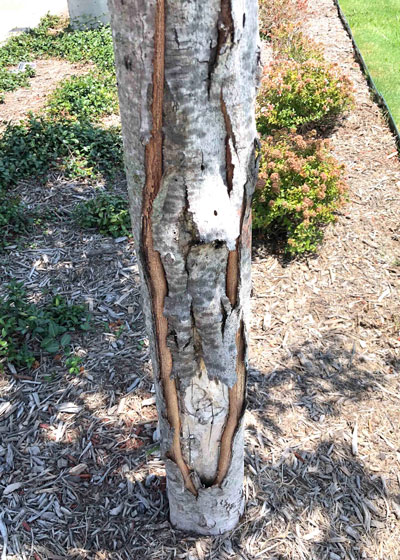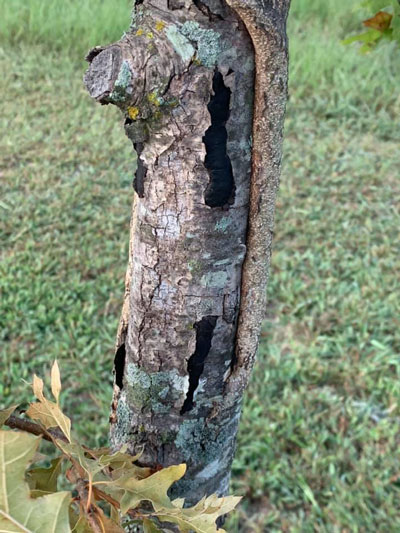Don’t Split Your Trunks
Diana in Dallas was calling to ask about staking and guying a young red maple she had planted in her front yard. She wondered how long it would need to remain secured in place.
Normally I’d tell someone to leave a new tree staked for the first two years, but I’d also warn them not to let the wires cut into the trunk.
I don’t remember exactly what I told Diana, because I was so taken by something else that she had said.
“I know I need to wrap the trunk so the sun won’t burn it.”
My friends, I’ve taken 450,000 phone calls in 44 years on the radio, and hers was the first time anyone has offered that comment.

Young maples, red oaks, Chinquapin oaks and Chinese pistachios have very thin bark when they’re young. The trees have been grown in nursery settings where they’re pot-to-pot, shading one another.
When we bring them out into our landscapes we suddenly expose them to full Texas sunlight, and it can be more than that thin bark can withstand. The tissues overheat and dry out.
But the results aren’t seen for a year or two later when the bark begins to split vertically, often exposing internal tissues. Dried bark often peels off entirely.

By then it’s too late to wrap the trunk. All you can do is hope that the tree can heal itself – that new bark can grow across the open wound. Sometimes it can. Often it can’t.

To prevent all of this, as Diana hinted, you merely apply paper tree wrap from the nursery or hardware store from the ground up to the lowest branch. Spiral it around the trunk tightly. It will adhere to itself, and it will be elastic enough to allow for growth without girdling the trunk. After a couple of years you’ll be able to remove the wrap carefully when the tree’s canopy can protect it with its own shade.
Diana knew that already, and now you do, too.
